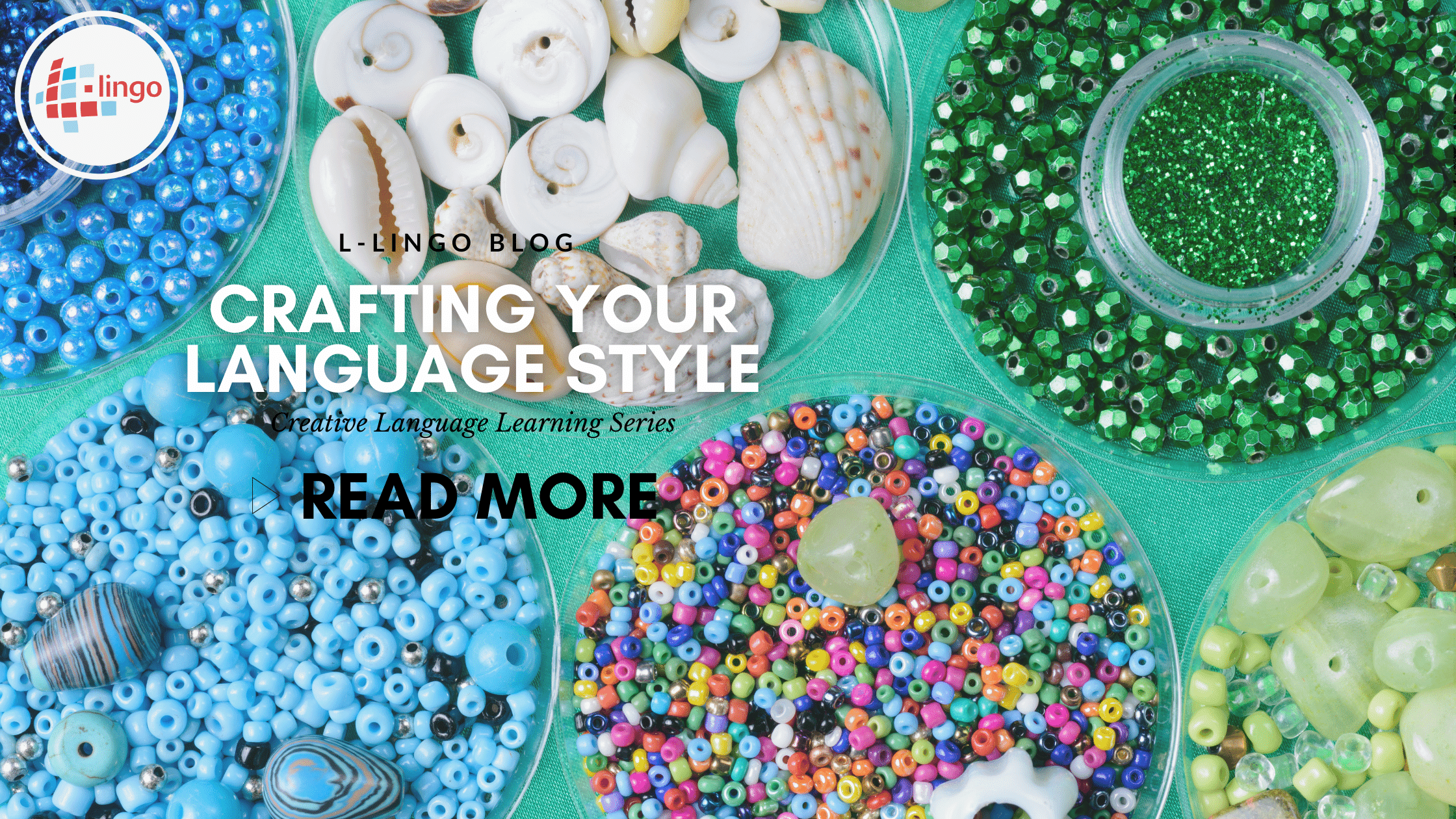What does it mean to craft your style in language? To craft your style means to create a style of language that is specific to you. Everybody has their unique patterns of speech; there are words that we say more than others and certain gestures that we do when speaking. Our way of expression is connected to our personality, and we can even connect your personality in the other languages that you learn.

Why Is It Important To Craft Your Style In Language Learning
Everyone is Different: No two people have the same thinking pattern. Even if it’s only the slightest difference, we distinguish ourselves by cognitive thought. This craft works because you will be creating a kind of custom-tailored language learning schedule/routine that is solely unique to you and you alone.
Stand Out From Other Language Learners:
There are universal standards that all language learners experience. However, there are also times when language learners manage to create their own grammatically correct term or phrase from the pre-existing grammar in their target language.
For example, something that I tend to do in Japanese is to leave sentences open (technically making them questions and sentences simultaneously)– this is a common practice in the language, but many second language learners may avoid doing this for fear of making a mistake. By finding a unique but common feature in your target language, you can easily stand out from other learners of the word.
Get Comfortable With The Language:
Once you craft your language style, things on your language learning journey will noticeably become easier. Many learners find that sticking to textbook material can be mundane and demotivating. But, should you find some leeway that allows you to playfully bounce back and forth between casual and formal language use, you might find your sweet spot.

How Do We Craft Our Language Style?
The first step is to know yourself:
Observe yourself in your first language, and then apply your observations to your second language/ target language. A wise man once said:
“You can never understand one language until you understand at least two.” – Geoffrey Williams
Finding this connection with your target language and native language will allow you to discover many things about yourself, some good some bad, but in the end, it will be an experience worth having. Once you have an understanding of who you are, you begin to understand the way you speak and how you carry yourself as well.
The second step is to experiment:
Yes, there are pre-established grammar rules in every language, but you don’t always have to stick to 100%. I’m not telling you just to throw grammar out the window and say whatever, but I am telling you that there is always room for re-arrangement. After all, you can’t craft your style if you’re strictly following the pre-existing grammar rules of your target language. You have to know when and where it is acceptable to experiment with grammar placements of your target language. Eventually, you’ll get the hang of it when you know you’re saying something off the meta, but it doesn’t raise too much of an alarm. Think about grammar in your native language. Do you always say that right thing 100% of the time?
The third step is to make it stick:
Once you’ve found what your language speaking style is, the final step is to make it stick. This means that you ought to make sure that other people understand the meanings your phrases and words convey. Imagine you’ve just launched a new product, how do you make sure people know about it, and what will your launch strategy be? First, you’d want to market that product. Then you want to assure potential customers of its quality so that they end up buying the product.
Then you want to give sufficient examples, detailing the grammar and vocabulary you modified. Should these modified/crafted phrases/words be acceptable, then people will begin to include it in their memory banks. They will make sure that it is specifically designated to understand your way of speaking. After you demonstrate the quality of your product (language), then you’re set up for a smooth landing.

Stitching Up A New Language Style
Use it often but not too much. You don’t want to completely kill it before it has a chance to walk on its own two legs. I recommend you try it out with your closest friends before giving it a whirl in the real world. Like mentioned earlier, you’ll know if it’s perfect, depending on the reactions you get when you begin to speak. It should raise an eyebrow, but metaphorically speaking, the eyebrow should still be on the forehead. That just means that it shouldn’t pose too much of an alarm.

Taking Action In Language Learning – Examples Included
What comes next after you’ve finely crafted your language speaking style? Well, that’s easy – keep on crafting other things. Language learning doesn’t have to be so straightforward, as the name of this series suggests “Creative Language Learning Series.” There are ways to go about how you approach learning new things about your target language, and this is just another one of those ways.
Disclaimer: Don’t go around saying L-Lingo taught you that you should always use imperfect grammar. We here at L-Lingo are just saying to make yourself and your language learning style distinguished from the millions of other learners. A general tip to follow to make crafting your style easier is to slightly break the societal rules behind certain aspects of the language.
I’ll give you an example of something tricky yet still grammatically correct that I’ve done to craft my style in the Japanese language. This example will break the gender bondage that the Japanese language has placed on certain words. So, in theory, while I am “violating” a rule of the language, the grammar is still intact.
I will use the sentence-final particle “wa” at the end of a sentence when speaking about sweet foods, and the sentence-final particle “ze” at the end of a sentence when talking about seafood. “Wa” is a final sentence particle that is only used by women and small children when speaking, while “ze” can be called its masculine equivalent. So by doing this, you get something like:
このケーキが美味しいわ!
Kono keeki ga oishii wa!
Usually, “wa” would be “desu” or even “da”. These particles have no gender, and anyone can use them. But as a male, I broke the rule of causality, formality, and gender all at once in Japanese and assigned the feminine particle “wa” to sweet foods. *Call the cops, yeah, I know – terrible, right?
Translation: This cake is delicious!
この鮪の味が濃いぜ!
Kono maguro no aji ga koi ze!
Translation: This tuna is heavily seasoned!
I didn’t break any rule here really, but I just assigned the masculine particle of “ze” since I’m talking about fish.
Quick Note: matching words and particles isn’t a grammatical rule in Japanese, meaning that technically I’m simultaneously breaking and creating a new rule all at once. And the best part about it is that it was all for the sake of my style.
It’s Time To Get Crafty With Your Target Language
Are there certain things you do to make your speaking style stand out? We’d love to hear all about, no matter what language you are learning. And remember to have fun while doing this, don’t stress too much about it either. Crafting your style is a creative language learning series technique so approach it with an open mind, motivation and you’ll be more than fine.





